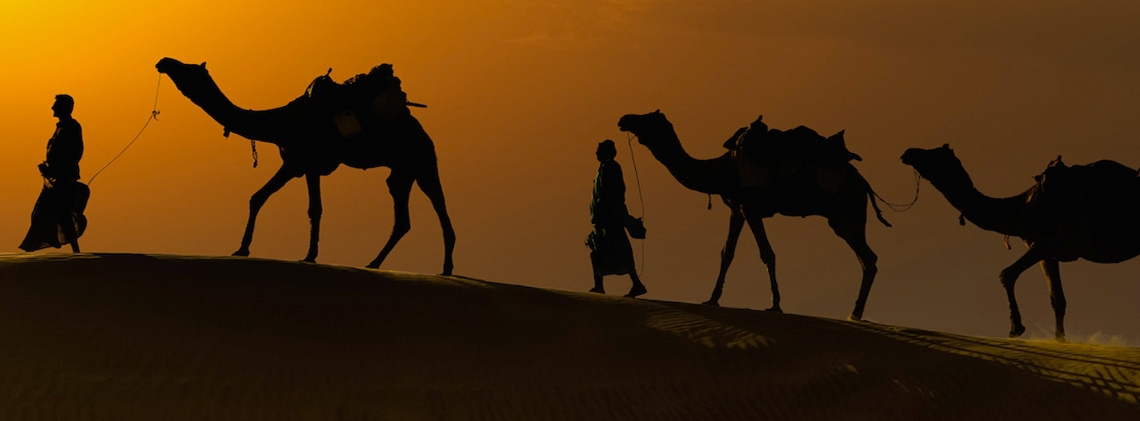
Silk Road
Splendid
Chi Culture
Topic
Silk Road
The Silk Road is the collective name for the traffic network which took shape in the Han (206 BCE–220 CE) and Tang (618–907) dynasties and extended from ancient China’s capital to various places of the world. These routes, connecting ancient China to Europe, also reached East Africa’s coastal countries, Western, Central, and South Asia, as well as Korea and Japan in East Asia.
In 1877, the eminent German geographer Ferdinand von Richthofen (1833–1905) coined the term Silk Road in his book China to refer to the routes from China to the area between the Amu Darya and Syr Darya rivers in Central Asia as well as the routes to India. Later historians adopted this term and extended the definition to all the routes between ancient China and the rest of the world. The idea of a Silk Road extended to include a “Ceramics Road,” a “Gemstones Road,” a “Buddhism Road,” and a “Religion Road.”
As one of China’s many special gifts to the world, silk is considered a cultural symbol of the ancient empire. Silk caused a sensation when it was introduced to Rome. During the early years of the Roman Empire, silk was as expensive as gold and was greatly favored by aristocrats. In the fourth century, faced with a huge deficit caused by the importation of Chinese silk, the Roman Empire issued numerous sumptuary decrees to ban the wearing of silk garments; however, the enforcement of which was never fully effective. At that time, Westerners called China the “land of silk” (Serica, or Seres). Splendor, affluence, and peace—these are the qualities that silk represented in the imagination of Westerners.
In the course of time, the Silk Road developed in keeping with the advancement of transportation technology. Vehicles drawn by animals (such as camels and horses) could easily traverse deserts, and cross mountain passes. The early routes were called the “Oasis Route,” or the “Prairie Route.” In the southwest it was called the “Mountain Route.” Following the progress in shipbuilding and seafaring techniques after the Song and Yuan dynasties (tenth century and later), the “Maritime Silk Route” came into existence.
Merchants had always been active on the Silk Road and, according to China’s historical records, the peoples in Central Asia were adept traders. During the Han and Tang dynasties (second–early tenth centuries), the best-known merchants of Central Asia were the Sogdians who travelled in groups between China and Central Asia. They were foreign merchants who also served as envoys to China. They paid tribute to the Chinese emperor while at the same time engaging in their own businesses.
Envoys and armies were frequent travelers on the Silk Road. General Li Guangli (d. 88 BCE) of the Western Han dynasty conquered Dayuan, which ensured the opening of the Silk Road, whereas the Tang general Gao Xianzhi (d. 756) was defeated by the Arabs at the Battle of Talas (approximately today’s Taraz in the Republic of Kazakhstan) in 751. This defeat, however, helped introduce Chinese printing and other technologies to the West, which is considered an important achievement of cultural exchange via the Silk Road.
Over the centuries, the Silk Road witnessed Chinese emperors sending princesses to form marriage alliances with the rulers of neighboring territories. Emperor Taizong (r. 626–649) of the Tang dynasty, for example, sent Princess Wencheng (ca. 623–680) to marry Songtsän Gampo (617–650), the Tibetan king. In addition to Western missionaries and Buddhist pilgrims such as Kumarajiva (d. 413) and Xuanzang (602–664), travelers on the Silk Road also included the frontier poet Cen Shen (715–770), and the great Li Bai (701–762) who was born in Central Asia, as well as other artists and explorers.
The Silk Road enabled cross-cultural exchange which considerably advanced the progress of human civilization. Europe and other Asian countries were greatly inspired by China’s Four Great Inventions (paper, printing, the compass, and gunpowder), as well as other innovations and discoveries such as silk, ceramics, tea, and medicine. Western religions and arts were gradually integrated into Chinese culture while Western foods, spices, medicine, and gemstones enriched the life of Chinese people.



